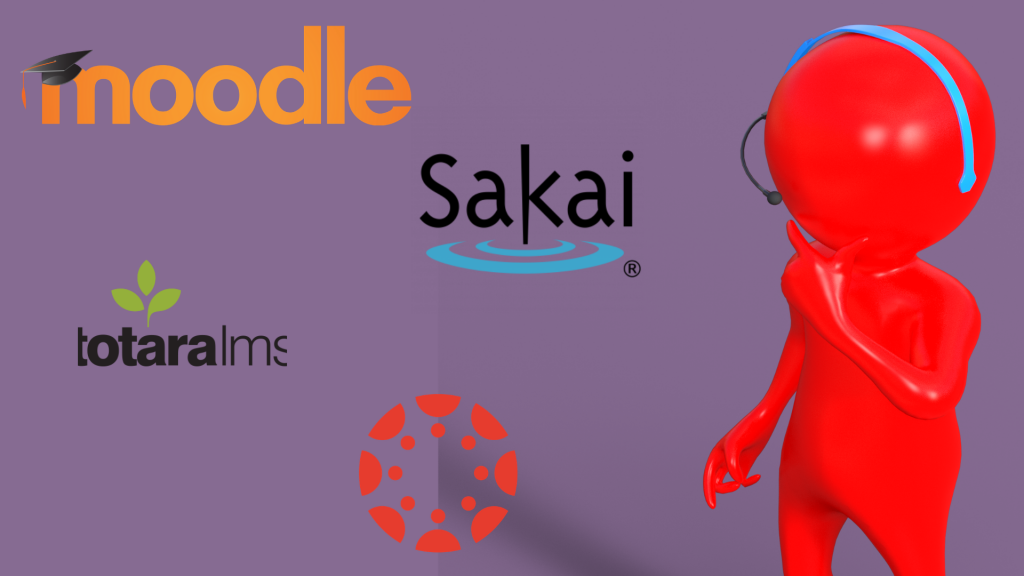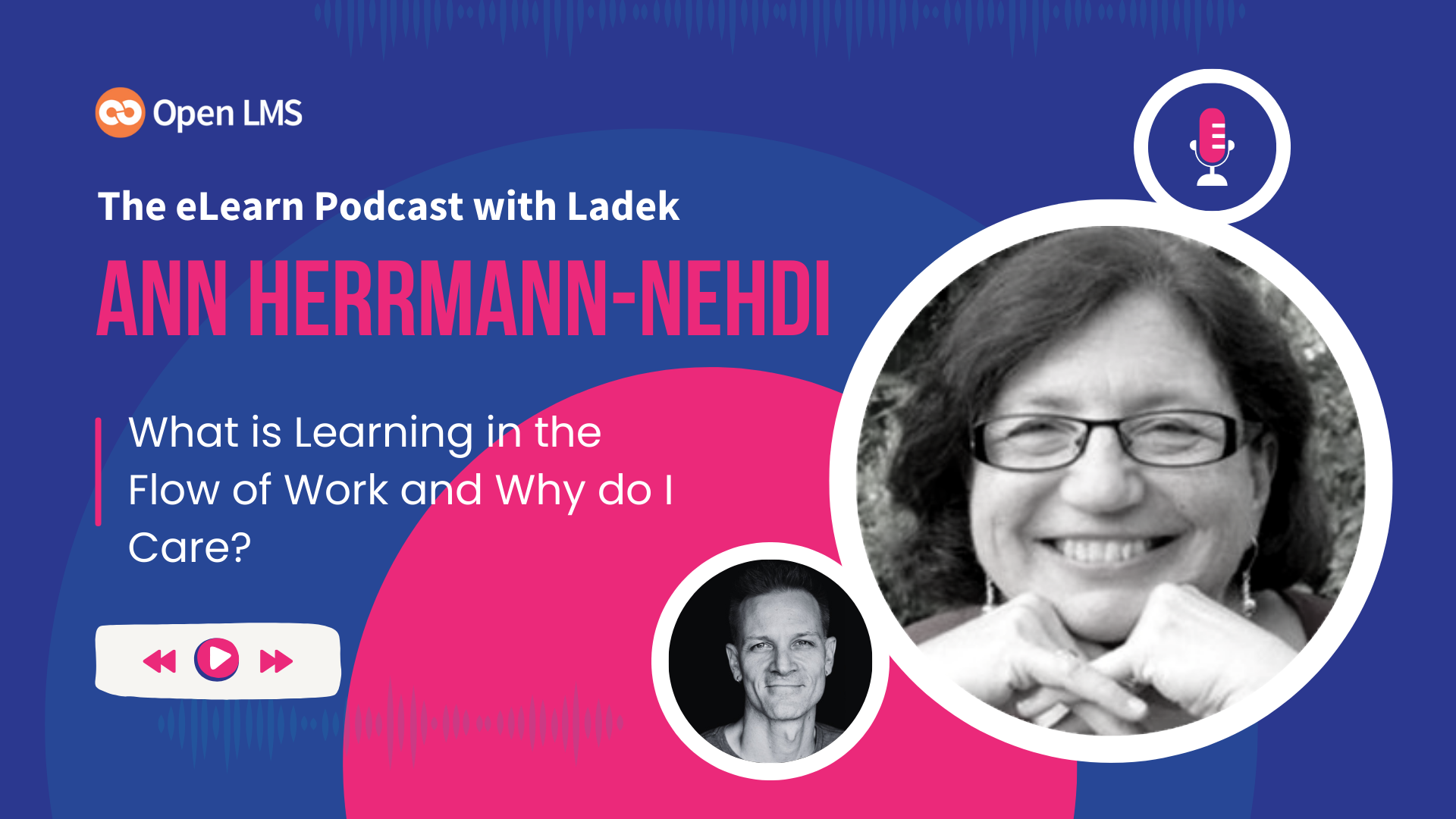Canvas LMS is simple and intuitive. Moodle™ is flexible and gives you all the control. What about Totara, D2L, Blackboard, Sakai or the others? When it comes to the experience of Learning Management Systems, we live in a wonderful time! But can we say the same about LMS customer service?
Any one of the top 4 or 5 LMS in the US are efficient technologies with a very similar structure and feature set. But if you run into a problem, who will be able to rescue you the fastest? Who will give you a complete solution and ensure your ultimate satisfaction?
Which vendor gives you the best LMS customer experience?
In this article, I hope you find a way to test the quality of customer service in your LMS. This will probably be the “make-or-break” criteria in a long relationship with your vendor!
You also need to be aware of the risks involved in the process. Online ratings for enterprise products can be tricky business.
Do the most popular LMS offer the best customer service?
Look for technology ratings and review sites. Find their top 10 LMS. I bet you have not heard about half of the LMS on the list.
What’s going on?
There are too many LMS to keep tabs. Because of this, it becomes crucial to filter your choices. Thus, there is an obvious path you can take:
Focus on the LMS with actual users. That is, people who have needed LMS customer service at some point.
Of course, popularity is not a perfect indicator of service quality. In fact, a large vendor can have trouble dealing with a sudden surge of complaints, if it runs into a service outage. (I cannot help mentioning this great sales call from The Office.)
You can pay attention to the small players. All you need is to know real users have reviewed their customer support lines. Do not trust perfect scores. And if there is a text, make sure it does not look like a sales rep wrote it.
In summary: Don’t focus on big, focus on number of real users supported.
The problems with online ratings and review sites to evaluate LMS customer service
There are obvious and not-so-obvious issues in the online reviews and ratings space.
Let’s get the obvious ones out of the way:
- People can lie
- There are not enough reviews
- Reviews are not timely enough
The not-so-obvious are in a way special cases of the obvious ones. So let’s look at them again with a retractable telescope:
People can lie ????
Someone can influence the review for an intended outcome. That is, if the site does not allow anonymous ratings, otherwise we may not even be talking about real people at all. There are other possible pitfalls in the reviews:
- Not lying, but aim to influence, not to describe their actual experiences.
- Describing their experience, but still have (positive or negative) biases.
- Being aware of their biases, but their experience can still be too specific and may not reflect yours.
By the way, if an LMS has lots of fake good reviews, don’t blame the vendor right away! It could be part of a sophisticated ploy. Zac Plansky can explain it
There are not enough reviews
The real value of customer support ratings depends on the volume. We often forget that, and sites with few reviews often hope that you do. There are other pitfalls:
- There are not good outliars. And in this context, outliars are good, as they represent extreme and “stress test” scenarios.
- There are not enough reviews for your business case.
- There are too many reviews to look into them for all the issues.
Reviews are not timely enough
This is essential in the tech world, EdTech included. Reviews of a couple of months back can be useless, let alone a few years. There are other pitfalls:
- Reviews focus on bad features that have now been fixed, or on good features that no longer exist.
- Reviews apply to old versions of the user device or operating system. Some systems are easier to service than others.
- Reviews tool place when there was a different company, business strategy or leadership.
In summary, reviews could be a useful tool to test the LMS customer service of a given vendor. But they cannot be the only factor behind your choice.
Sources of quality data for a sound LMS customer service experience
When you are looking to make the best choice among vendors, we are talking about one thing: Data. Real, up-to-date, clear and useful data. This is easier said than done. Vendors often offer you some LMS customer support stats, and expect that you take them at their word. So when one of them shows you independent, third-party LMS customer service satisfaction stats, even if they are less than stellar, give them props for transparency!
Vendors could be more open about their customer satisfaction metrics. But LMS customer service data is not a one-size-fits-all. There is a baseline that could be helpful, and any LMS vendor should be in the ability to provide:
Percentage of service uptime.
Minutes or seconds of the year in which the system was working. A basic metric, but current tech is no longer making uptime a service differentiator. 99.9 or 99.99% is almost a given among the top LMS vendors.
Percentage of complaints.
In the case of LMS customer support, the best unit is total serviced users, rather than customers. That is, the sum of users from all customers. This offset issues of LMS and customer scale.
Average response and resolution time.
How long did the LMS vendor took in acknowledging your request? And how long until the issue was fixed for good?
Average satisfaction rate per issue.
This metric is often confused with the ratings discussed above. Lucky ones who ran into no trouble should not count when measuring customer service. Instead, we want to know how happy people were after facing some issue.
Customer retention rates.
And its opposite, churning rates, are perhaps the ultimate metrics, except that they are not exclusive to customer support. Make sure of the length of the rate. In our experience 3 to 5 years is an ideal timeframe to see the real dynamic of customer relationships.
To ask good LMS customer support questions, adopt a Risk Management mindset
Beyond the baseline, the quality of the answer lies on the questions you make, at least as much as on the data. Depending on the type of learning organization you represent, the needs vary. There are no standard ways to come up with good questions, let alone that lead to specific data points. But there are some approaches that can help:
- The “Funnel” approach. Make a list of the most serious or worrying issues your organization could face, starting with the “bigger picture.” Then go into specific areas and cases of your organization.
- The “Landscape” approach. What are issues faced by competitors or other organizations in the ecosystem? What kind of service they needed to get through?
- The “Lifecycle” approach. Consider how technology, and its hypotetical failure, applies at ever step of the learner lifecycle. Another way to look at the “Lifecycle” is from the point of view of a request. Which channels do you have available to request customer support?
- The “Bottom Line” or “ROI” approach. Start by listing the direct threats to your organization’s finances, and the role proper customer support might play to thwart them. Continue with the indirect threats in first, second and third degree. And so on.
- The “Past experiences” approach. What issues have you, your competitors and partners have run into before? What kind of customer support could have made them the least impactful, or prevent them atogether?
In summary, the quality of your LMS customer service evaluation depends on the available data almost as much as the quality of the questions you ask during the process.
LMS Customer Service from the US top vendors: What we know so far
We will continue to update this space as new information about LMS customer support becomes available. You can tip us of updates by contacting us or by leaving a comment below.
Canvas LMS
With the standard multi-year contract, reportedly in the six-figure USD territory, Canvas LMS offers support to admins only, 12 hours a day, with 80% of tickets answered within 2 business days. Additional tiers offering 24/7 availability, phone and chat support, reduced waiting times and user coverage are available at additional fees.
eThink Education (Moodle and Totara)
Update: eThink is now part of Open LMS
Now into the real Open Source LMS space. With presence in 8 countries and 3 continents, eThink Education is the largest Certified Partner for both Moodle and Totara. “Industry-leading,” “unrivaled” are some of the words they use to boast their 24/7 “unlimited and uncapped” service line. The fastest growing in the US, it reports an average time response of under an hour for a yearly volume of 12 thousand requests, and 5-year customer churn rate “practically non-existent.” Another advantage eThink customers enjoy is the highly standardized approach which allows to guarantee “fixed for one customer, solved for everyone.”
Moonami (Moodle and Totara)
Update: Moonami is now part of Moodle US
Above and beyond, one-on-one support is the promise of Moonami’s team, which also boast being the only cloud-based LMS supporting AWS GovCloud for highly sensitive content. The icing on the cake? No contract lock-in. If you don’t love Moonami’s LMS customer service, just walk away.
If you have a Moodle or Totara installation that is giving you trouble, either self-managed or supported by another vendor, they will bring it to AWS for you free of charge.
Sakai
From a customer service standpoint, The Sakai Project and its dwindling share of the market is a risky proposition. Unlike Moodle or Totara, it does not have a partnership program that offers the layer of support expected from most universities. And for many, the “UC Davis incident” of 2016, where a multi-partnership program could have com in handy, still resonates.
Still, there is a key silver lining for the project led by the Apereo Foundation: Like Moodle and Totara it is Open Source, which means any skilled vendor can offer to support it. And as an early 2019 report by Apereo on the NYU case study, an Open Source environment coupled with a low price point and in-house expert support can create high levels of user satisfaction over the long run.
iSpring
In 2017, business and web services review site Capterra awarded iSpring with the “Best Customer Support badge.” Today, it is no longer on the website where sponsored LMS appear along the others, and dozens appear with 5 stars, iTunes U is considered and LMS, and only Moodle (4 out of 5 stars) and Canvas (4.5) feature at least 500 reviews.
Conclusion: Your LMS Customer Service criteria and workflow
If you want to choose the LMS customer experience of your lifetime, take advantage of the following list which summarizes this article:
- Take online reviews and ratings with a pebble-sized grain of salt.
- Ask the right questions. Turn as many as you can into indicators data can answer. But don’t rely exclusively in quantitative information.
- Find the right people for the answer. The best vendor is not the one who gives you all the answers, but who guides you to the main source. Who ideally should be its own customers.
- “Stress Test” early on. Device “horror” scenarios to put the support lines to the test.
- Mitigate your risks. In contract-based deals, insist “inadmissibly low” level of quality in customer support be a valid reason to end a contract without repercussion.








